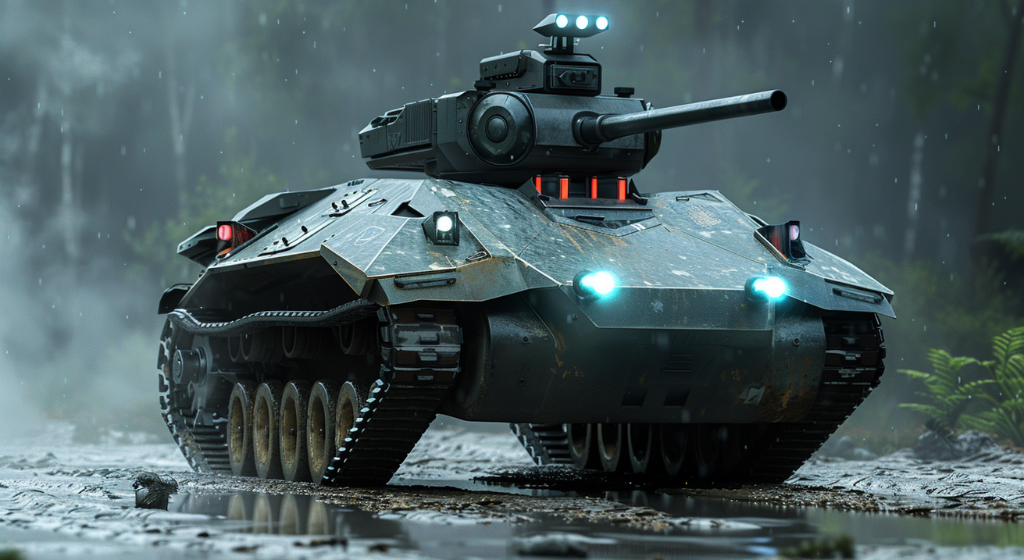
In late 2023, the RACER E4 experiment successfully demonstrated the adaptability of fully autonomous RFVs over a complex 15-square-mile Texas terrain featuring diverse vegetation and obstacles, achieving equally successful runs both day and night. (Source: Image by RR)
RACER’s Robotic Fleet Expands, Testing Autonomy in Diverse Military Settings
DARPA’s Robotic Autonomy in Complex Environments with Resiliency (RACER) program has successfully transitioned into its second phase, introducing a new, larger class of robotic vehicles known as RACER Heavy Platform (RHP) vehicles. These 12-ton, 20-foot-long vehicles complement the existing RACER Fleet Vehicles (RFVs) and are designed to test and improve the program’s autonomy algorithms in more complex, off-road conditions. As noted in darpa.mil, the introduction of these larger vehicles aims to demonstrate the scalability and versatility of the RACER autonomy systems across different platforms and environments, aligning with the program’s goal of developing technology that can operate agnostically across various military-relevant terrains.
Phase two of the RACER program kicked off with its fourth experiment, designated “E4,” which was conducted last fall and involved rigorous testing of both the RHPs and RFVs. The tests, carried out by teams from the University of Washington and NASA’s Jet Propulsion Laboratory, focused on achieving higher off-road autonomous speeds with lower intervention rates. The phase aims to continuously advance the autonomy capabilities of the RACER vehicles, enhancing their adaptability and resiliency in diverse and challenging military environments. This development cycle is planned to continue with updates and testing every six months, ensuring ongoing improvements and adaptations of the autonomous systems.
The recent E4 experiments were conducted in military training areas in Texas, where the RACER vehicles navigated a 15 square mile area featuring a variety of natural obstacles and terrains. This setting provided a realistic and challenging environment for testing the vehicles’ adaptability and performance, including nighttime operations. The teams achieved significant success, completing over 30 autonomous runs and covering more than 150 miles at speeds up to 30 miles per hour. These achievements demonstrate the program’s progress in refining the vehicles’ autonomous navigation and operational capabilities in realistic combat scenarios.
Looking forward, the RACER program is set to continue its rigorous testing schedule with two more experiments planned for 2024, maintaining its six-month cycle of development and evaluation. This ongoing effort not only supports the evolution of military robotic technologies but also commemorates the 20th anniversary of DARPA’s Grand Challenge, which catalyzed the development of autonomous vehicle technologies for military use. As RACER progresses, it remains focused on enhancing the sophistication and utility of autonomous systems in complex, off-road military environments, pushing the boundaries of what robotic vehicles can achieve in challenging conditions.
read more at darpa.mil







Leave A Comment